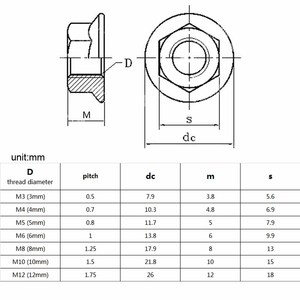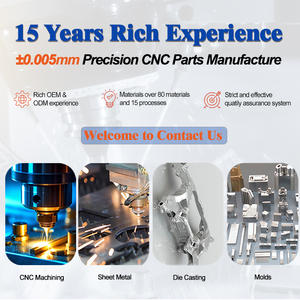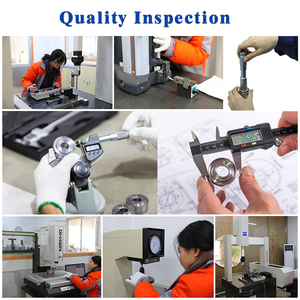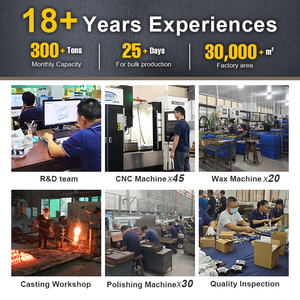
All categories
Featured selections
Trade Assurance
Buyer Central
Help Center
Get the app
Become a supplier

(1589 products available)
































Precision forging involves a variety of stainless steel grades, which perform distinctively, depending on the purpose to which one intends to use them. The stainless steel grades of the selected materials include the following:
SS 304 Grade
SS 304 is an austenitic stainless steel commonly used in this process. The material contains nickel and chromium and is corrosion resistant. The steel is also ductile and can work harden. These properties make it easy for the steel to be forged into complex shapes. Therefore, the steel is used in precision forging for automotive parts, medical instruments, and food processing equipment.
SS 316 Grade
SS 316 contains molybdenum. The composition makes it more resistant to corrosion than SS 304. Furthermore, the steel's resistance to marine and chemical environments makes it ideal for precision forging in the marine industry as well as chemical processing equipment. Besides, the steel's ability to resist deformation under stress makes it suitable for demanding applications.
SS 410 Grade
SS 410 is a ferritic-austenitic grade. The stainless steel contains chromium, which makes it ideal for applications that require moderate corrosion resistance. The properties also feature high wear retardance. Thus, the steel is used for precision forging in automotive components and machinery parts. However, its corrosion resistance is not as effective as that of the austenitic grades.
SS 52100 Grade
SS 52100 is a high-carbon chrome alloyed steel commonly used in precision bearing manufacturing. The steel's exceptional hardness and wear retardance make it suitable for high-performance applications. They include ball and roller bearings in the automotive and aerospace industries.
SS 625 Alloy
SS 625 is a nickel-based alloy containing chromium, molybdenum, and niobium. It offers outstanding retardance to corrosion and oxidation. In addition, it comes with high strength even at elevated temperatures. These make the steel suitable for marine components, chemical processing, and aerospace parts.
Stainless steel precision forging has a myriad of applications in diverse industries due to its strength, corrosion resistance, and ability to take complex shapes. Some of the common uses include:
Automotive Industry
In the automobile industry, stainless steel components are made using precision forging. They are integral for structural integrity and therefore enhance strength and lightweight properties. Such components include engine parts, gearbox casings, and fuel system components. All need to work seamlessly under high pressure. Thus, precision forging makes it possible to improve the parts' performance and endurance.
Aerospace Applications
The aerospace industry requires components that will not corrode when flying at elevated temperatures. Stainless steel precision forged parts such as brackets, gears, and structural components have high strength-to-weight ratios, making them suitable for aircraft's demanding performance and safety requirements.
Medical Equipment
Medical instruments must be durable and easy to sanitize. Stainless steel precision forgings are used in surgical instruments, implants, and diagnostic equipment. The instruments' corrosion resistance and strength ensure they can withstand repeated sterilization processes while maintaining their functionality and reliability.
Marine Components
The marine environment is very corrosive, so stainless steel forgings are ideal. In addition, they retain their shape, strength, and corrosion resistance in these harsh conditions. Common components include propeller shafts, pumps, and housing parts used in boats and submarines, especially under water.
Oil and Gas Industry
Forged bed frames have corrosion resistance and high strength, which withstand extreme pressures and temperatures. The industry uses stainless steel forgings in valves, pumps, and drilling equipment. Thus, they ensure longer service life in harsh operating environments.
Fasteners and Hardware
In construction and manufacturing, fasteners and hardware are critical for structural integrity. Stainless steel precision forged fasteners, such as bolts, nuts, and screws, offer superior corrosion resistance and strength. Hence, they are reliable components in outdoor and high-moisture environments.
Agricultural Equipment
In agriculture, the equipment must withstand heavy loads and resist corrosion from moisture and chemicals. Stainless steel precision forged parts used in tractors, sprayers, and other farming tools provide the durability and strength required for efficient outdoor operations.
Material Selection
The selection process starts with choosing the appropriate grade of stainless steel. The choice depends on the intended application. For example, they may use 304 for general-purpose and 316 for marine environments. They do not usually require as heavy a machining allowance as ordinary steels, since they will be machined after forging, anyway. They normally are tough and hard to cut.
Billet Preparation
It involves cutting the stainless steel into billets or slugs of the specified size. The billets usually need heating to around 1100-1300°C for easy deformation during forging. Heating also helps reduce the steel's toughness and increase the chances of the particles bonding properly during forging.
Forging
The prepared billet is placed in a die in a mechanical press, heated to the temperature the dies are set for, and then deformed into a net-shape component. The dies have the advantage of producing a component with very close tolerances, thus minimizing the need for further machining to achieve the required dimension. The close tolerances also ensure that the end product is dimensionally correct with respect to its blueprint.
Finish Machining
Once the forging process is over, the next thing is to machine the forged part to achieve the final dimensions and surface finish. The machining operations include turning, milling, and grinding. In turning, the part is fixed and rotated against a cutting tool to remove parts to give a cylindrical shape. During milling, rotating cutting tools are used on workpieces to create flat surfaces or machine slots and other geometrical features. Grinding is used to give the part a fine finish by removing small amounts of metal and achieving high accuracy.
Heat Treatment
Heat treatment is done to relieve internal stresses, increase toughness, reduce brittleness, and harden the material where necessary. In quenching, the forged part is heated to a certain temperature and then cooled quickly by immersing it in water or oil. This helps to harden the component. In tempering, the quenched component is reheated to a lower temperature so that some of the hard martensite converts to softer ferrite, relieving its brittleness and bringing down its toughness.
Surface Treatment
If required, the forged component undergoes treatments to enhance corrosion retardance, improve surface finish, or prepare for coating. The component may be pickled, passivated, or electroplated. In pickling, chemical acids are used to remove rust, scale, and other contaminants from the surface. Passivation usually is done by applying an acid to form a protective oxide layer on stainless steel, aiding in corrosion retardance. Electroplating involves applying a thin metal layer on top of the forged part to improve corrosion resistance or surface finish.
Quality Control
Forged parts undergo thorough quality checking to ensure they meet set standards. They carry out non-destructive tests such as ultrasonic or radiographic testing to identify internal defects. They may also measure dimensions, hardness, and tensile strength to assess mechanical properties. Other visual tests are done to check for possible surface faults, such as cracks, pits, or discoloration.
Selecting the Right Forge” Metal Components
Many factors determine the quality of forged metal components, one of which is the type of steel used in the forging process. Different steels have distinct properties that suit them for different applications. For instance, they often use mild steel for automotive body components, while forge weldable steel for heavy load-bearing equipment.
Other than the type of steel, consider whether the metal will require machining after forging. Usually, stainless steel precision forging requires little machining after the process since it is already shaped to close tolerances. However, if using ordinary steel, purchase set of forge tongs to help you handle the heated metal with ease.
Choosing the Right Forging Technique
Generally, the choice of forging technique determines the quality and properties of the final product. For instance, they commonly use hot forging for high-carbon steels to increase workability and reduce the chances of brittleness setting in. On the other hand, cold forging suits softer metals, which are easier to shape even without heating.
Dies Quality and Maintenance
The quality of the dies directly affects the quality of the forged components. That's why go for high-quality steel dies that will last several forging cycles without wear. In addition, maintenance plays a vital role in sustaining die quality over time. Regular inspection and repair of worn-out or damaged dies are important in ensuring consistency in the forged components.
Tolerances and Surface Finish
Tolerances and surface finish are other important factors to consider as they impact the final component's performance and appearance. Since the goal of precision forging is to achieve high precision, ensure that the forge components have the required tolerances as per specifications. Whereas surface finish affects the part's functionality, it also affects its appearance. Use surface treatment technologies to eliminate roughness and improve corrosion resistance.
Supplier Reputation
The reliability and reputation of the forging supplier always impact the quality of the end products. Therefore, always make it a point to do your homework on the supplier's industry standing. More specifically, check reviews and testimonials from past customers. Find out whether the supplier has experience in forging specific components relevant to your requirements.
Forging Material Availability
Usually, the availability of the forging material has a significant effect on project lead time and overall cost. So, when choosing the material, always go for one that is readily available in your region. Unfortunately, if a material goes missing or has low availability, it will take ages for the supplier to source it, thus delaying your project.
A1: Precision forging is a manufacturing process that forms metal alloys into specific shapes with high accuracy using die molds. Stainless steel precision forging is therefore the shaping of stainless steel into precise, high-tolerance components using dies, typically for applications where strength, corrosion resistance, and exact dimensions are critical.
A2: Stainless steel precision forging offers several benefits. For starters, precision forging improves stainless steel parts' dimensional accuracy and surface finish. It also enhances the mechanical properties of forged components, making them stronger and more durable.
A3: Stainless steel precision forging should be considered if you need high-strength, corrosion-resistant components with tight tolerances. Specifically, industries that benefit from stainless steel precision forging include automotive, aerospace, medical devices, and marine components.
A4: Yes! A stainless steel alloy in the forged form offers excellent corrosion resistance. The reason behind this is that it contains chromium, which forms a protective oxide layer on the steel, preventing rust and corrosion. The precision forging also enhances the material's density, further improving its corrosion-resistant properties.
A5: Common post-forging treatments include heat treatment, machining to refine surfaces and achieve final dimensions, and surface treatments like pickling and passivation to enhance corrosion retardance and clean the surface.